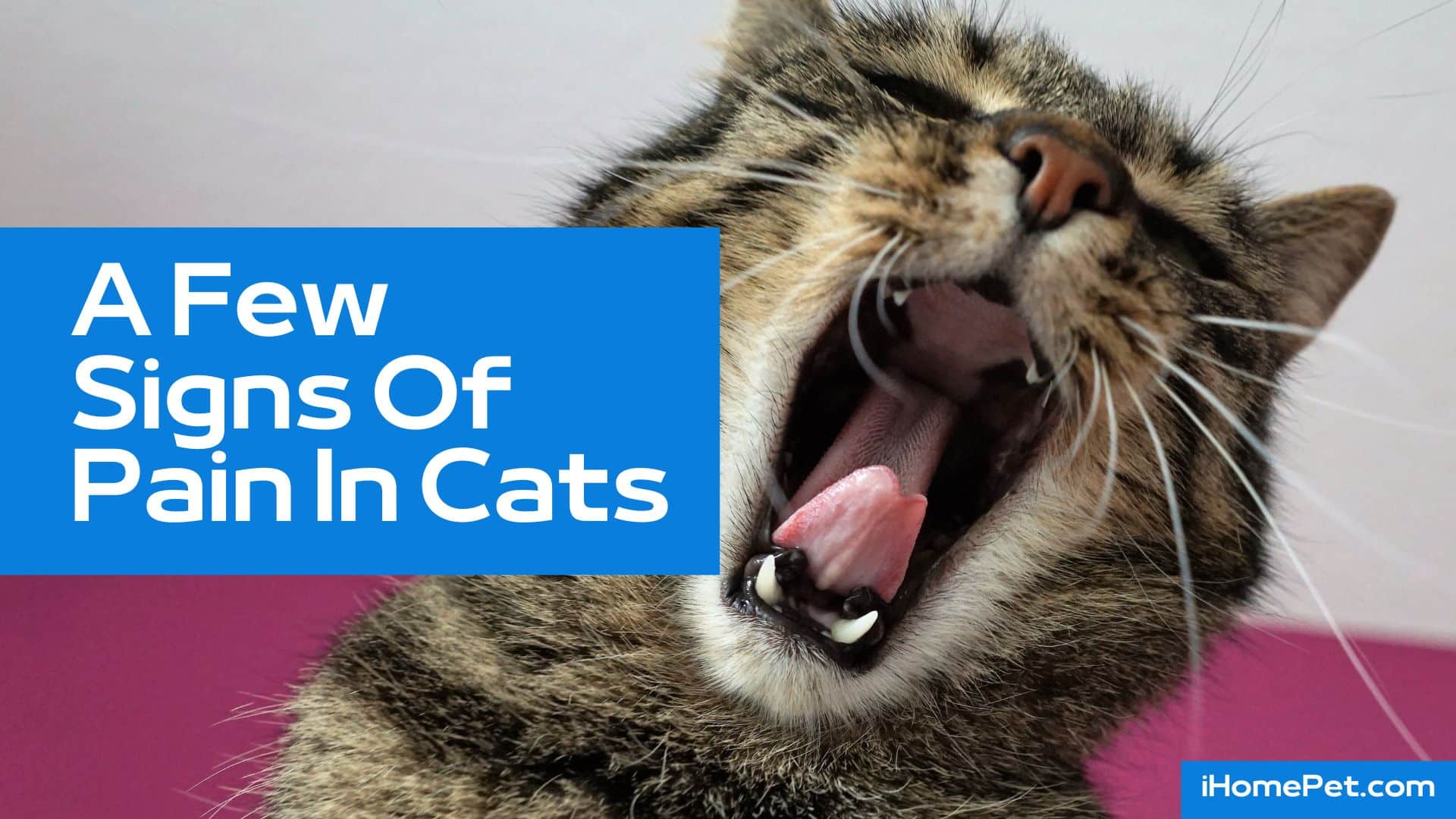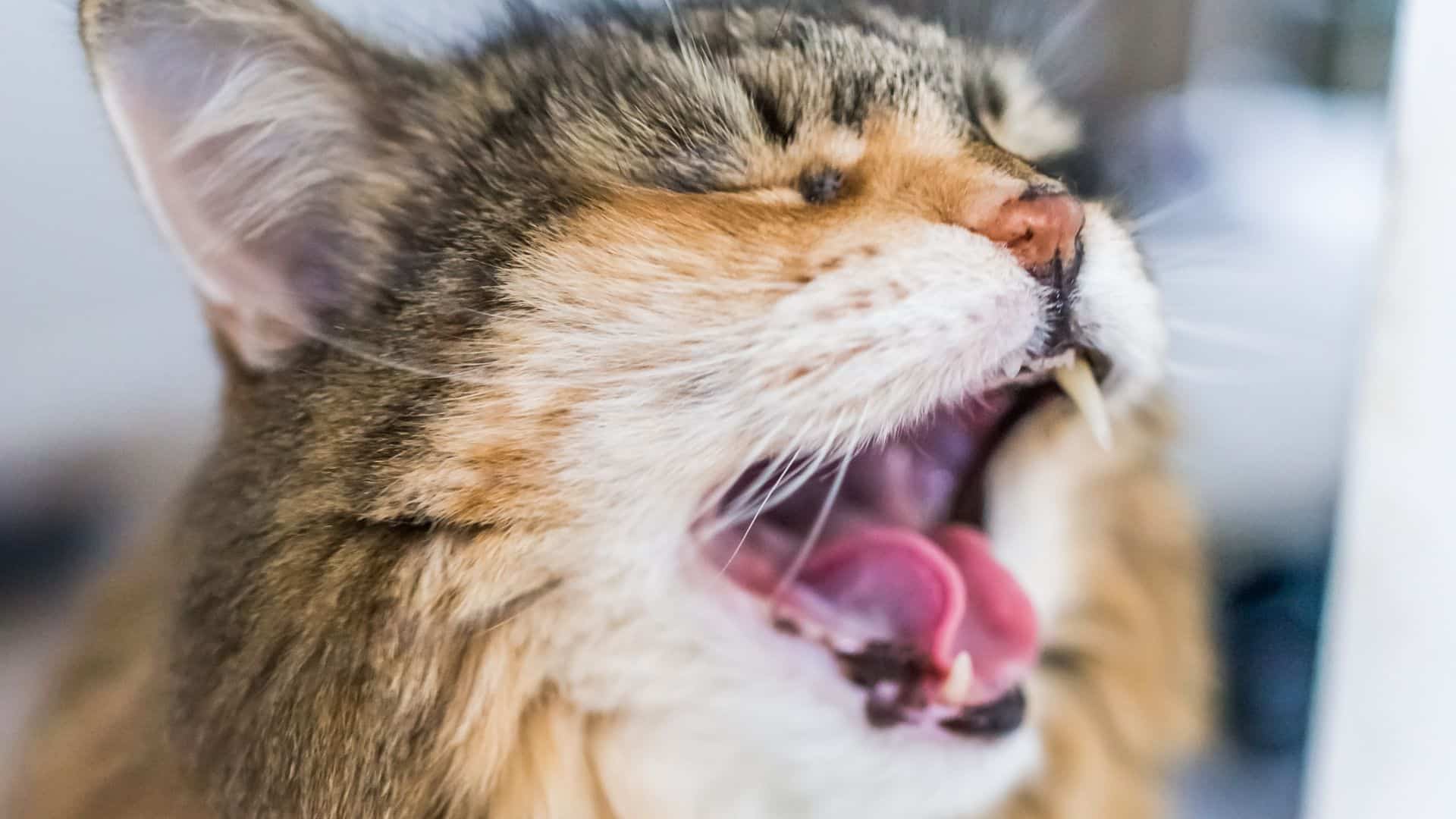Cats hide the pain for a good reason – out in the wild they have no pack to protect them from predators, so a cat visibly in pain is a surefire prey. But this instinct can work against them in the safety of a household as pet owners often misread their pain signals.
Learning to decipher those cues can make both your kitty and your life a lot simpler. So, let’s see the most common signs your feline friend may be in pain.
Obvious Signs Of Pain in Cats That Most Cat Owners Should Know

It depends on the type of pain, but a cat in pain will no longer be able to mask its ordeal, or at least not do it that flawlessly. A suffering cat will rarely cry out in pain, so it is best to focus on the most subtle signs, especially when the pain is chronic:
Low interest in their toys
A cat in pain may suddenly lose interest in their favorite activities, toys, other pets, and people. Other cats would have their heads lowered and may avoid any kind of physical contact or interaction. They may also display signs of aggression or irritability, such as hissing or growling, when approached or touched.
They might have difficulty engaging in previously enjoyable activities and may become more withdrawn or lethargic. Additionally, a cat in pain may exhibit changes in their eating and grooming habits, either consuming less food or neglecting their usual grooming routine.
Extended naps or different sleeping patterns
A distressed cat may withdraw, sit still for long, take longer-than-usual naps, and become less active. Many cats have a different facial expression when they are distressed, often appearing tense or worried. They may also exhibit changes in their eating habits, such as refusing to eat or eating significantly less than usual.
No interest in their grooming activities
The suffering cat may lose interest in their day-to-day grooming activities (a healthy cat spends around 4-6 hours on grooming, all day, every day). A friendly cat that is in pain may over-groom the body region that causes them pain.
Excessive meowing and head lowered
Behavioral changes may also include the cat lowering its head and avoiding physical contact or interaction. It may become more withdrawn and show signs of aggression or fear towards humans or other animals. Changes with their facial expressions may also be observed, such as dilated pupils, flattened ears, and a tense or grimacing expression.
Becomes aggressive with contact
A cat that is hurting may become unusually aggressive toward you, especially if you want to touch the area that hurts (it can happen even to cats that are naturally easy-going).
Your pet’s behavior changes as a defensive response to protect itself from further discomfort. It may hiss, scratch, or bite in order to communicate its distress and discourage any attempts at contact. Uncharacteristic aggression and legs tucked are common symptoms of a cat in hurting.
A different body language when you try to touch their painful area may include flinching, pulling away, or even growling. This change in behavior is a clear indication that your cat is experiencing discomfort and should not be ignored. It is essential to respect their boundaries and refrain from touching the painful area to avoid further distress.
Trouble using the litter box
House soiling (a cat in pain, especially arthritic pain, may find it too hard to get in and out of their litterbox). Most cats that are displaying signs of pain will show weird scratching behaviors, such as scratching outside the litter box or avoiding it altogether.
Additionally, cats with urinary tract infections or other medical conditions may associate the litter box with discomfort, leading to house soiling.
Difficulty squatting can also be a reason for trouble using litter boxes. Cats with joint issues or muscle weakness may struggle to maintain the necessary squatting position while eliminating, causing them to avoid the litter box altogether.
Lost of appetite
Appetite loss Cats in pain lose all interest in their favorite foods (this should be a red flag, as cats are wired to never go hungry for survival reasons). If your kitten has eaten in 48 hours, take them immediately to a vet.
Their drinking habits also tend to vary during periods of appetite loss. Some cats may drink more water to compensate for the lack of food, while others may decrease their water intake as well. It is important to monitor your cat’s drinking habits closely and consult a veterinarian if you notice any significant changes.
Causes of Cat Pain: A Cat Experiencing Pain

Pain in cats and other pets can be acute, chronic, or post-surgery, but just like with the different symptoms and signs, you should take your cat to a vet to get a clear picture.
Acute pain is usually caused by injury, fractures, poisoning or gastrointestinal obstructions. Chronic pain is most commonly caused by arthritis, which goes wildly underdiagnosed in cats. Here are some of the less common causes of cat pain:
- Urinary tract infections (UTIs), such as cystitis, and urethral obstructions
- Widespread inflammation of the intestines (enteritis), stomach (gastritis), and pancreas (pancreatitis)
- Various dental diseases and conditions, like tooth fractures, gum disease, and tooth lesions
- Middle or inner ear infections these can cause a lot of pain and can be caused by something as trivial as not properly cleaning the ears.
- Degenerative eye issues
- Aortic thromboembolism, a heart disease complication more common in cats than in dogs
- Cancer – the most painful types of cancer for a cat are kidney or spleen cancer, bone cancer, and mouth cancer.
Best Treatment for Cat Pain: Seek Veterinary Care
If you suspect your cat may be in pain take them to your vet. Do not try to self-medicate as both human-approved and dog-approved meds can be toxic to a cat. It takes as little as a Tylenol tablet to kill a cat.
So, human NSAIDs are a big no for cats. A veterinary professional will know what to give each cat for pain after a medical diagnosis.
The most common pain killers your vet might prescribe, in severe cases, are Meloxicam, which is best-given post-surgery. Aspirin is sometimes administered to cats as well but in smaller doses than in dogs.
Should You Provide Pain Medications When Your Cat Is In Pain?
Do not try giving your kitten aspirin if you see them in pain, as aspirin can be lethal to small animals if internal bleeding is involved.
As a pet owner, you can help ease your beloved furry friend’s distress through tried-and-tested remedies that cannot interact with the medication prescribed by your veterinarian.
For instance, if your kitty is in pain because of arthritis you can apply a quality topical pain relief for pets to the affected areas. Also, a heating pad can make arthritic cats’ life a little better, especially at night.
Last Updated on 16/03/2025 by Karen Snow
Hi! I’m Karen and a certified dog lover. As a freelance writer and blogger, I do my best to squeeze in some time with my dogs, learning more about the way they act and how I can make sure that they continue to stay well-cared for by yours truly.
My dogs have helped me through a lot, and this is my way of giving back to them! Besides animals, I also love to travel and cook, having explored my country’s restaurants and unique places. Follow me as I show you all the amazing tips and bits of information I learn along the way about our furry friends!
